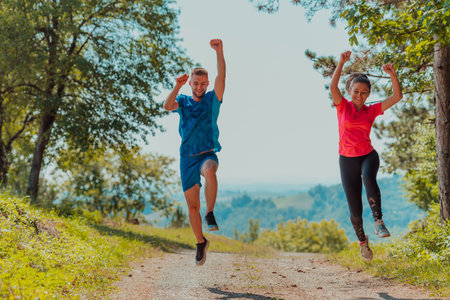1. Understanding the Importance of Recovery After Hiking
Hiking can be an incredible way to enjoy America’s great outdoors, from the rugged Rockies to peaceful Appalachian trails. But after a challenging hike, your muscles, joints, and connective tissues need time to recover—just like athletes after a big game. Integrating physical therapy principles into your hiking recovery routine isn’t just for those with injuries; it’s essential for everyone who wants to stay active and prevent problems down the road.
Why Is Proper Recovery Essential?
Many hikers overlook recovery, eager to plan their next adventure. However, skipping proper post-hike care can lead to nagging aches, strains, or even serious injuries. Here’s why recovery matters:
| Benefit of Recovery | How It Helps Hikers |
|---|---|
| Reduces Injury Risk | Allows micro-tears in muscles and ligaments to heal, lowering risk of overuse injuries. |
| Boosts Long-Term Performance | Supports muscle growth and joint flexibility so you’re stronger for future hikes. |
| Keeps Hiking Enjoyable | Prevents soreness from building up, so you can keep exploring without discomfort. |
| Promotes Safe Outdoor Fun | Makes sure you’re physically ready for the next trail, reducing accident risk. |
The Role of Physical Therapy Principles
Physical therapy focuses on restoring movement and function while preventing further injury. By borrowing some tried-and-true PT strategies—like targeted stretching, gradual cool-downs, and mindful self-care—you’ll help your body bounce back faster and healthier after every hike.
Common Signs You Need Better Recovery
- Persistent muscle soreness lasting more than 48 hours
- Joint pain that doesn’t fade with rest
- Tightness or stiffness in hips, knees, or ankles after hiking
- Fatigue or feeling “sluggish” before your next adventure
Quick Tip:
If you notice any of these signs, it’s a signal from your body to step up your recovery game using proven physical therapy techniques tailored for hikers.
2. Core Physical Therapy Concepts for Hikers
Understanding Key Physical Therapy Principles
After a challenging hike, your body needs more than just rest to recover effectively. Integrating physical therapy principles into your post-hike routine can help you bounce back faster, reduce soreness, and prevent injuries. Three fundamental concepts from physical therapy—mobility, flexibility, and strength—are especially important for hikers.
Mobility: Keeping Joints Moving Smoothly
Mobility refers to how well your joints move through their full range of motion. Hiking on uneven terrain puts a lot of stress on ankles, knees, and hips. Simple mobility exercises like ankle circles or knee-to-chest stretches can help keep your joints healthy and ready for your next adventure.
Flexibility: Stretching Out Tight Muscles
Flexibility is all about the length of your muscles and how easily they stretch. Tight muscles after a hike can lead to discomfort or even injury if not addressed. Including gentle static stretches in your recovery routine can help release tension and improve your overall flexibility.
Strength: Building Supportive Muscles
Strong muscles support your joints and absorb shock from tough trails. Focusing on strength-building exercises during recovery—not just during training—can reinforce weak spots and prepare you for future hikes. Bodyweight moves like squats, lunges, or calf raises are excellent options.
Sample Recovery Routine: Integrating PT Concepts
| PT Principle | Example Exercise | Purpose |
|---|---|---|
| Mobility | Ankle Circles | Improves ankle joint movement after rocky trails |
| Flexibility | Hamstring Stretch | Relieves tightness in the back of the legs |
| Strength | Bodyweight Squats | Builds leg strength to support future hikes |
Tip:
You don’t need fancy equipment—just a few minutes and some open space at home or at the trailhead can make a big difference in how you feel the next day.
![]()
3. Designing a Hiking Recovery Routine with PT Methods
Why Use Physical Therapy Principles?
Integrating physical therapy (PT) principles into your hiking recovery routine can help you bounce back faster, reduce the risk of injuries, and keep you enjoying the trails longer. PT methods are rooted in science and focus on restoring muscle balance, improving flexibility, and building strength—all key to recovering from tough hikes.
Step-by-Step Recovery Routine for Hikers
Dynamic Stretching: Get Your Body Moving
After a hike, dynamic stretching helps loosen up tight muscles without overstressing them. Instead of holding static stretches, try gentle movements that mimic your hiking motions.
| Exercise | How to Do It | Benefits |
|---|---|---|
| Leg Swings | Swing each leg forward and backward 10-15 times | Loosens hips & hamstrings |
| Ankle Circles | Rotate ankles in both directions 10 times each foot | Improves joint mobility |
| Lateral Lunges | Step side to side into a lunge 8-10 times per leg | Targets inner thighs & hips |
Foam Rolling: Ease Muscle Tension
Foam rolling is a self-massage technique used by physical therapists to release muscle knots (trigger points) and boost circulation. Spend 1-2 minutes on each major muscle group—especially your calves, quads, hamstrings, and glutes.
| Muscle Group | How to Foam Roll |
|---|---|
| Calves | Sit with legs extended, roll from ankle to knee using moderate pressure |
| Quads | Lying face-down, roll from hip to just above the knee cap |
| Hamstrings/Glutes | Sit on the roller and move back-and-forth along the length of the muscle |
Targeted Strengthening: Build Back Stronger
A good recovery plan doesnt just help you feel better—it also makes you stronger for your next adventure. Focus on exercises that stabilize your knees, ankles, and hips.
- Bridges: Lie on your back with knees bent, lift hips up and down 12-15 reps. Great for glutes and lower back.
- Calf Raises: Stand on a step or flat surface, raise up onto toes and slowly lower down for 15 reps. Builds calf strength for uphill climbs.
- Banded Lateral Walks: Place a resistance band around your thighs and take side steps for 10-12 reps each direction. Activates hip stabilizers.
Create Your Own Routine Table
| Recovery Activity | Duration/Reps | Main Benefits |
|---|---|---|
| Dynamic Stretching Circuit | 5-7 minutes total | Makes muscles flexible & ready to recover |
| Foam Rolling Major Muscles | 1-2 minutes per group | Eases soreness & improves blood flow |
| Knee/Hip/Ankle Strength Exercises | 2 sets of 12-15 reps each exercise | Keeps joints stable & strong for next hike |
| Hydration & Nutrition Break | – | Aids muscle repair & overall recovery |
Tweak Your Recovery Plan as Needed!
No two hikers are exactly alike. Listen to your body—if something feels off or painful (not just sore), ease up or consult a professional. Adapting these PT-inspired techniques will help you stay active and injury-free all hiking season long.
4. Adapting Recovery for Trail Conditions and Personal Needs
Why Customizing Your Recovery Matters
No two hikes are exactly the same, just like no two hikers have the same needs. Recovery routines after a hike should be as unique as your trail experience. By weaving in physical therapy principles, you can address different trail conditions, your personal fitness level, and any aches or injuries that pop up along the way.
Adjusting for Hike Intensity and Terrain
The type of hike you tackle—whether its a gentle woodland stroll or a rugged mountain ascent—makes a big difference in how your body feels afterward. Heres a quick reference to help you match your recovery routine to your hike:
| Trail Type | Common Strains | Recommended Recovery Actions |
|---|---|---|
| Smooth & Flat Trails | Mild fatigue, light muscle soreness | Gentle stretching, light walking, hydration |
| Rocky/Mountainous Trails | Ankle/knee stress, muscle tightness | Targeted foam rolling, ankle mobility drills, elevation of legs |
| Steep Descents/Ascents | Knee pain, quad fatigue, lower back strain | Quad and hamstring stretches, core exercises, ice packs if needed |
| Long-Distance Hikes | General fatigue, joint stiffness, blisters | Full-body stretching, self-massage, foot care (soaking/blister treatment) |
Personal Fitness Level Considerations
Your recovery plan should fit where you’re at physically. Beginners may need more rest and simpler exercises, while experienced hikers might benefit from more advanced techniques.
| Fitness Level | Focus Areas | Physical Therapy Tips |
|---|---|---|
| Beginner | Basic flexibility and mobility | Breathe deeply during stretches; prioritize gentle movements over intensity; don’t skip rest days. |
| Intermediate/Advanced | Strengthening and injury prevention | Add resistance bands or light weights; incorporate balance work; focus on weak spots (like hips or ankles). |
Tackling Common Trail Injuries with PT Principles
Certain aches and pains show up more often on the trail. Knowing how to respond with physical therapy strategies can make a big difference in your recovery:
- Sore Knees: Try gentle quad stretches and use ice if swollen. Strengthen surrounding muscles over time to prevent future pain.
- Ankle Sprains: Rest and elevate right away. Use ankle circles and towel scrunches to regain mobility as healing allows.
- Tight Calves or Hamstrings: Gentle static stretching works best post-hike. Massage with a foam roller if available.
- Blisters: Clean carefully and protect with bandages. Let feet air out when possible.
A Few Quick PT-Inspired Tips for Every Hiker:
- Pace your recovery—don’t rush it.
- Stay hydrated before, during, and after your hike.
- If something hurts more than mild soreness or swelling lasts longer than 48 hours, consider checking in with a healthcare provider.
The Bottom Line: Listen to Your Body!
The most important part of adapting recovery is paying attention to how you feel. Adjust your routine based on what the trail threw at you—and remember that integrating physical therapy principles can keep you hiking strong for years to come.
5. Building a Culture of Wellness in the Outdoor Community
Embracing physical therapy (PT) principles isn’t just about individual recovery—it’s about making wellness a shared value within hiking groups and the broader outdoor community. When hikers come together to prioritize smart recovery routines, they create an environment where everyone can thrive, push their limits safely, and enjoy the outdoors for years to come.
Why PT-Informed Recovery Habits Matter for Groups
Hiking is as much about camaraderie as it is about the challenge. Adopting PT-informed habits—like proper stretching, hydration, and post-hike muscle care—helps everyone bounce back stronger after big adventures. These practices can foster resilience, reduce injury risk, and keep spirits high even on tough trails.
How Group Wellness Boosts Mental Health
The support found in hiking groups goes beyond physical benefits. Shared commitment to recovery creates a sense of belonging and accountability that boosts mental well-being. When one person leads by example, others follow—building a culture where self-care is celebrated rather than skipped.
PT Principles That Support Sustainable Hiking Adventures
| PT Principle | Group Practice Example | Long-Term Benefit |
|---|---|---|
| Active Recovery | Organize group cool-down walks or gentle yoga after hikes | Faster muscle repair, less soreness |
| Education & Awareness | Share tips on injury prevention during meetups | Empowered, knowledgeable hikers |
| Mental Wellness Focus | Check-in circles to talk about challenges and wins | Stronger group bonds, reduced stress |
| Hydration & Nutrition Habits | Remind each other to hydrate and snack wisely before/after hikes | Sustained energy, better overall health |
| Restorative Sleep Routines | Encourage good sleep after group outings with shared reminders or resources | Improved recovery, safer future hikes |
Together Toward Lasting Adventures
By integrating PT-inspired recovery steps into every outing—and making them part of your group’s DNA—you’re not just protecting your own health. You’re helping build a resilient, mindful hiking community where everyone feels supported on the trail and beyond. This shared commitment keeps outdoor adventures accessible, enjoyable, and safe for all.


